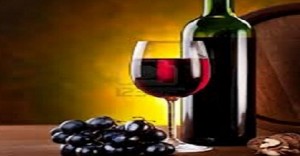
 The size and shape of your wine glass and how you hold it determines how much you end up drinking, a new study suggests. After witnessing how environmental cues like plate size and food labels impact eating behaviours, researchers decided to take a look at how similar factors impact drinking experiences.
The size and shape of your wine glass and how you hold it determines how much you end up drinking, a new study suggests. After witnessing how environmental cues like plate size and food labels impact eating behaviours, researchers decided to take a look at how similar factors impact drinking experiences.
In the study by Doug Walker, Laura Smarandescu, and Brian Wansink, drinkers unintentionally poured larger servings when their glasses were wider, when the pourers held them in their hands, and when the glassware matched the wine.
“If you want to pour and drink less wine, stick to the narrow wine glasses and only pour if your glass is on the table or counter and not in your hand – in either case you’ll pour about 9-12 per cent less,” Wansink said.
The researchers from Iowa State and Cornell Universities recruited 73 students who drank at least one glass of wine a week. The students were brought to several different stations and were asked to pour themselves a normal serving of wine. At each of these stations, the researchers manipulated environmental cues to measure their effects.
They used three different types of wine glasses to test the effect of size and shape: Large, Wide, or Standard.
To see if participants subconsciously drank more when they anticipated a meal, some stations featured a large or small place setting.
To examine the effects of pouring position, students either poured their wine into a glass they were holding or into glass placed on a table.
To examine the visual effects of colour contrast, there was either low contrast between the wine and the glass (white wine in a clear glass) or high contrast (red wine in a clear
glass).
As the researchers suspected, several environmental cues lead to over pouring. When glasses were wider, participants poured 11.9 per cent wine.
The students poured 12.2 per cent more wine when they were holding their glasses, compared to pouring into glasses placed on a table.
When there was low contrast between the glass and the wine (white wine in a clear glass), participants poured 9.2 per cent more wine than when there was high contrast (red wine
in a clear glass).
People are likely to over-pour if they choose a wide glass, hold the glass while serving, or select a wine that matches their glass – but the good news is that, retrospectively, people seem to be aware of how these cues influence their pours, researchers said.